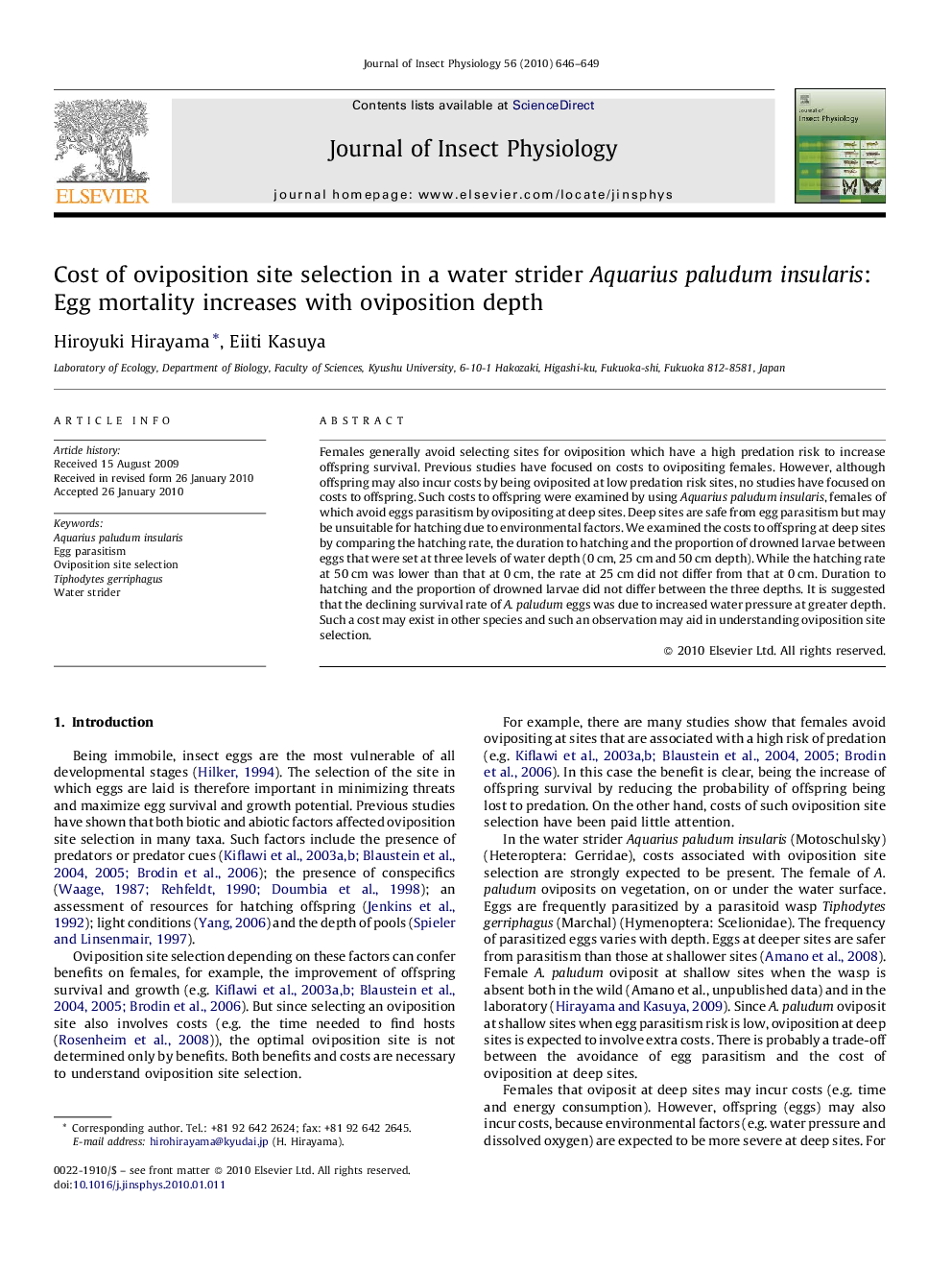| Article ID | Journal | Published Year | Pages | File Type |
|---|---|---|---|---|
| 2840789 | Journal of Insect Physiology | 2010 | 4 Pages |
Abstract
Females generally avoid selecting sites for oviposition which have a high predation risk to increase offspring survival. Previous studies have focused on costs to ovipositing females. However, although offspring may also incur costs by being oviposited at low predation risk sites, no studies have focused on costs to offspring. Such costs to offspring were examined by using Aquarius paludum insularis, females of which avoid eggs parasitism by ovipositing at deep sites. Deep sites are safe from egg parasitism but may be unsuitable for hatching due to environmental factors. We examined the costs to offspring at deep sites by comparing the hatching rate, the duration to hatching and the proportion of drowned larvae between eggs that were set at three levels of water depth (0Â cm, 25Â cm and 50Â cm depth). While the hatching rate at 50Â cm was lower than that at 0Â cm, the rate at 25Â cm did not differ from that at 0Â cm. Duration to hatching and the proportion of drowned larvae did not differ between the three depths. It is suggested that the declining survival rate of A. paludum eggs was due to increased water pressure at greater depth. Such a cost may exist in other species and such an observation may aid in understanding oviposition site selection.
Related Topics
Life Sciences
Agricultural and Biological Sciences
Insect Science
Authors
Hiroyuki Hirayama, Eiiti Kasuya,
